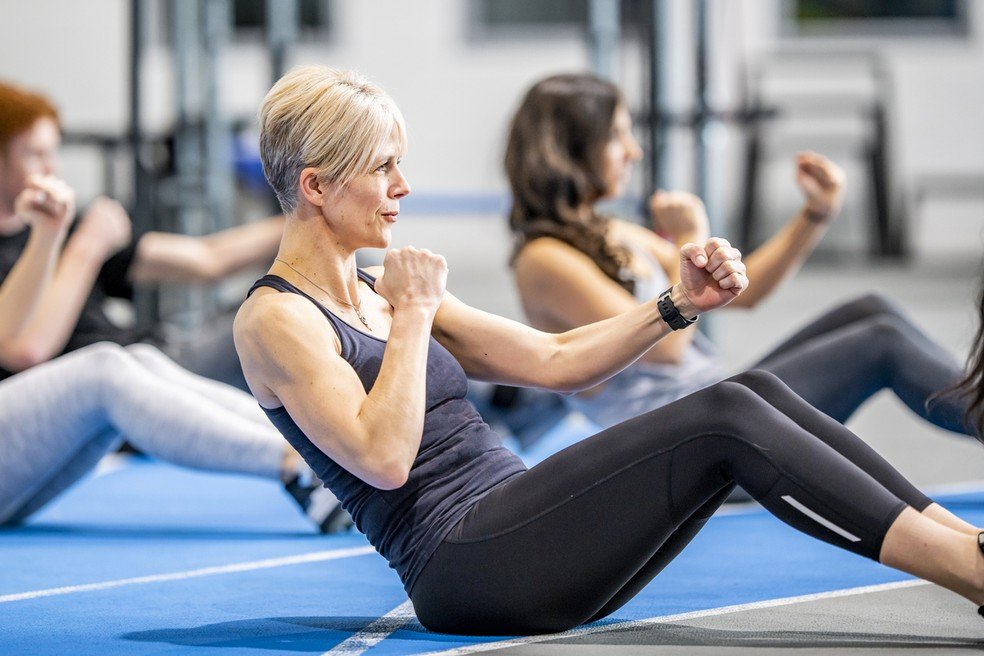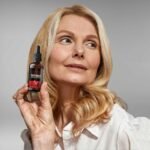Fitness over 50? the first step we need to do is to look at the particular concerns associated with training someone who is older. Enhance your lifestyle with the following tips
| Article Summary: |
|
Over many years of attending the Arnold Sports Festival, a common trend has resulted in the demographics of the over 120,000 people attending that weekend. Initially, the 18 to 25-year-old male group represented the majority, but that number has slowly risen and is now being led by the 25-45-year-old male group.
It is a simple trend that is reflected in many gyms across the country and reflective of the more mature adults beginning to train at the gym. Secondary to this shift is associated with the next fastest-growing group of individuals who are over 50 years of age in our society.
Fitness Over 50 – How To Attract More Client
Now that the average life expectancy in the United States is at 77 years, quality of life in one’s later years is increasingly essential. As a gym owner or a personal trainer, your marketability to attract and maintain a mature client is definitely reflective of the current needs seen in fitness today.
Understanding and conforming to the protocol necessary for individuals who are over the age of 50, and specifical people over the age of 65, can prove to be very lucrative for any fitness facility.
A simple example can be seen based upon the peak times associated with many gyms. Most people with jobs workout early in the morning or late in the afternoon, but there is a definite drop-off in membership attendance between the hours of 10 am ’til 3 pm. This is typically the time that an elderly individual is available to train.
One of the first things that we need to do is look at the particular concerns associated with training someone who is older. Life puts a strain on the human body and causes many health deficits to form, which require changes in protocol for training.
Concerns For Fitness Over 50 People
Let’s take a look at some of the unique problems associated with individuals who are over 50 years of age, who want to exercise:
- Loss of flexibility
- Loss of strength
- Loss of endurance
- The Loss of stability/and balance
- Increased sensitivity to heat/cold/humidity
- Increased risk for diabetes-related cuts / bruises / contact abrasions / skin ulcers.
- A decline in memory
- Vision changes
- Inability to workout longer than 45 minutes due to unstable insulin levels
Improving The Quality Of Life

Luckily, exercise routines, when correctly performed, often result in an increase in flexibility and strength. It is crucial to note these factors when you are doing a pre-and post-exercise program evaluation. This validates the need for additional exercise and justifies any possible cost associated with the program.
Obviously, there is a common loss of endurance that is associated with deconditioning of the cardiac and respiratory tissues (heart and lungs). The good news is that individuals who are elderly respond extremely fast to cardiovascular training. The gains associated with endurance are often exponentially higher than those associated with flexibility and strength gains.
Coordination and core stability are often lost in individuals as they age. The integration of balance activities that are age-appropriate is beneficial to the elderly client. Many other small changes need to be made.
Small Changes To Various Protocols
The addition of various protocols that can result in potential injury is also abundantly important, wearing shoes to prevent injury from the equipment and floor, Large fonts on written workouts to provide easier visibility, and larger numbers on weights. Trained personnel in CPR and other first-aid protocols are required by many states.
Many exercise programs need to adhere to a maximum time of 45 minutes. This is necessary since it is difficult for individuals over the age of 65 to maintain a blood sugar level that is adequate enough to sustain proper brain activity.
Flexibility and core training are often not included in this total time factor since they often don’t elevate the heart rate to a higher level than rest. The individual’s general physical capabilities and other health conditions obviously are a factor involved in the final determination in total exercise time
Exercises Not To Do For Clients Over The Age Of 65
- Raising more than one leg at a time (even when the client is seated)
- Forward flexion at the hip greater than 45 degrees (this has to do with blood pressure and balance issues)
- Inversions requiring the head to go below the heart (reaching down from a standing position to pick up a water bottle/weights, etc.)
- Overuse of a joint or muscle group (a group of upper body arm exercises all requiring sustained abduction of the shoulder joint coupled with more exercises requiring additional abduction/adduction shoulder work)
- Uncontrolled movement as it relates to a full range of motion (the following music faster than 124-128 bpm or cueing to swing hand-held weights in a large range of movement)
- Excessive or forced hyperextension and hyperflexion of a joint/joints (neck, wrist, and knees equal neck extension greater than 30 degrees, bending the wrist forward or back with the other hand, triceps dips using the chair as support, holding the knee (fully flexed) on the outside of the leg, quadriceps stretch with the foot held in place behind the body)
- Double-arm overhead triceps extension with hand-held weights
- High impact aerobic moves (i.e., jumping or hopping)
- Floor work exercises (with many, it would be the “I’ve fallen and can’t get up!” fear and reality)
- Exercises with any height difference (i.e., step-boards, as balance issues and the potential for falling are the main concerns here)
Helpful Tips For Seniors
Very sturdy chairs (straight-back, armless steel gauge) that are easy to grip help many individuals to add balance or stability for any standing exercise and offer a simple seated platform for which they can workout on.
A chair should be provided for each participant in the class. Elastic tubing with handles, simple light dumbbells ranging from 1-8 pounds, and a 6-9″ semi-soft rubber ball provide all the equipment that is necessary to provide a complete “anti-aging” exercise class. Participants should bring water to class, dress in comfortable clothing, and wear shoes with good lateral support and shock absorption qualities.
Programs designed for individuals that are even over 40 years of age should always implement a 10-minute warm-up time. Some stretching may be necessary prior to beginning any further exercises. This is necessary to provide ample time for increased circulation and proper mental preparation.
Reasons For Training
Statistically, most of the individuals who begin an exercise program in the age range of 30-45 years are participating based upon a change of life status (i.e., divorce). Individuals who begin an exercise program 45-60 are primarily doing so based upon a change of health status.
Individuals who began an exercise program 60-85 are doing so based upon social activities and self-maintenance. Exercise programs for the elderly are very beneficial for maintaining one’s independent status. The research shows that if the exercise regimen is followed starting at the age of 60, the person would probably not need support living for the rest of their lives.
The socialization aspect of discussing common aches and pains is very unifying during this type of activity. Many gyms can offer the space for the class to hold an old-fashioned potluck luncheon following the class to add some extra fun to the fitness.
Many endearing relationships are formed from activities such as this, and participants often bring more clients to the fitness classes increasing gym memberships.
Most people 65 years and older are often not involved in active full-time employment and are often seeking workouts that are off-peak times. Many are gearing towards morning or early afternoon as their primary choice for exercise.
Insulin response is often the primary factor that provides this to be the best time for them to exercise. Night time and early morning driving are often avoided by many aging individuals due to the fact that they see halos while they are driving in the dark.
Conclusion
The addition of specific programs relative to the aging exercise group offers a complete community awareness of fitness needs. Some special training is advised, but the results are very beneficial to both the gym and the community as a whole.





